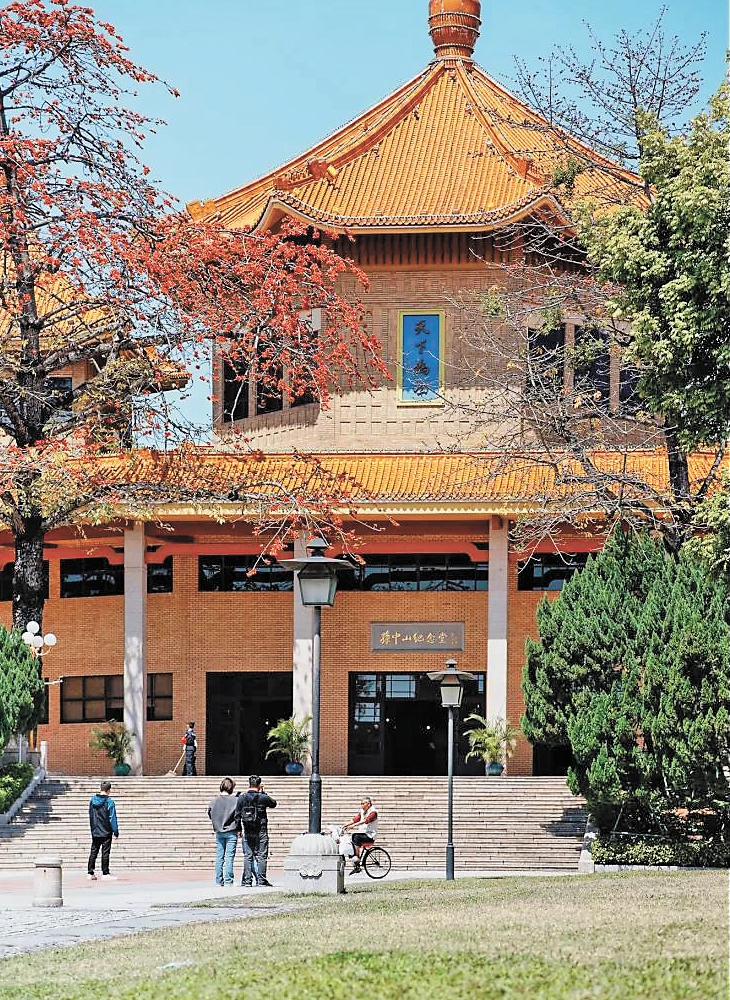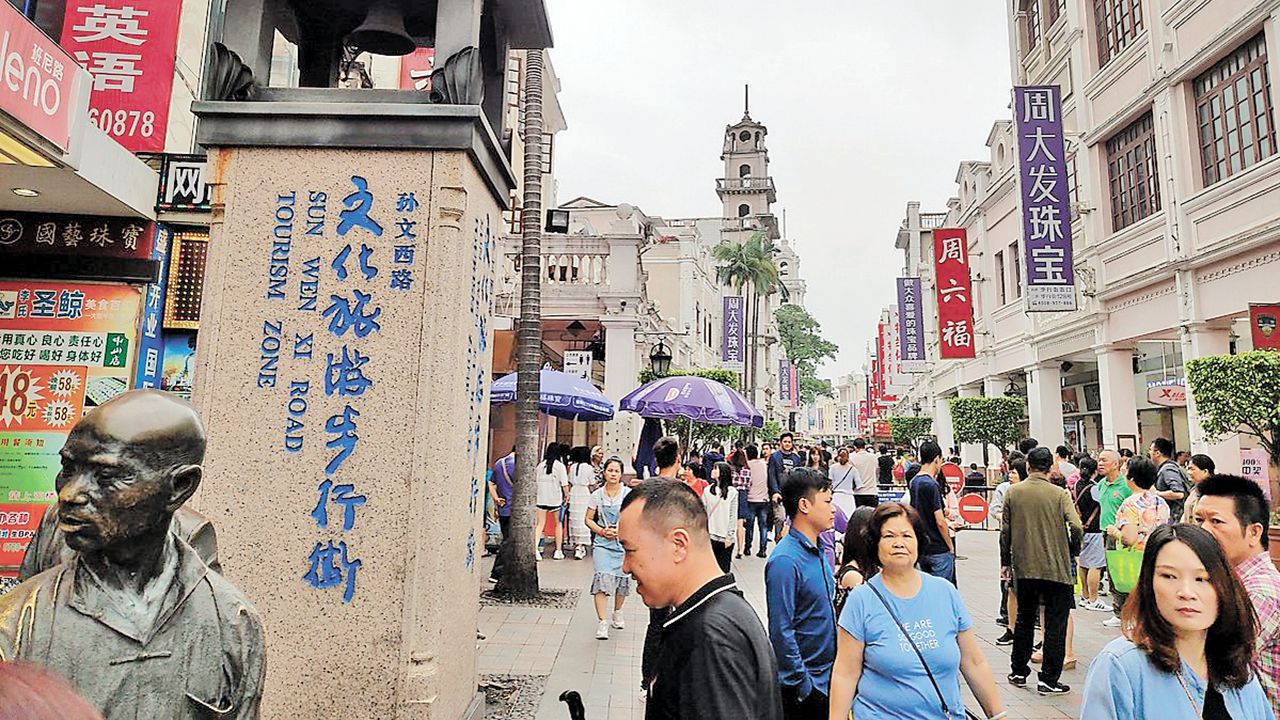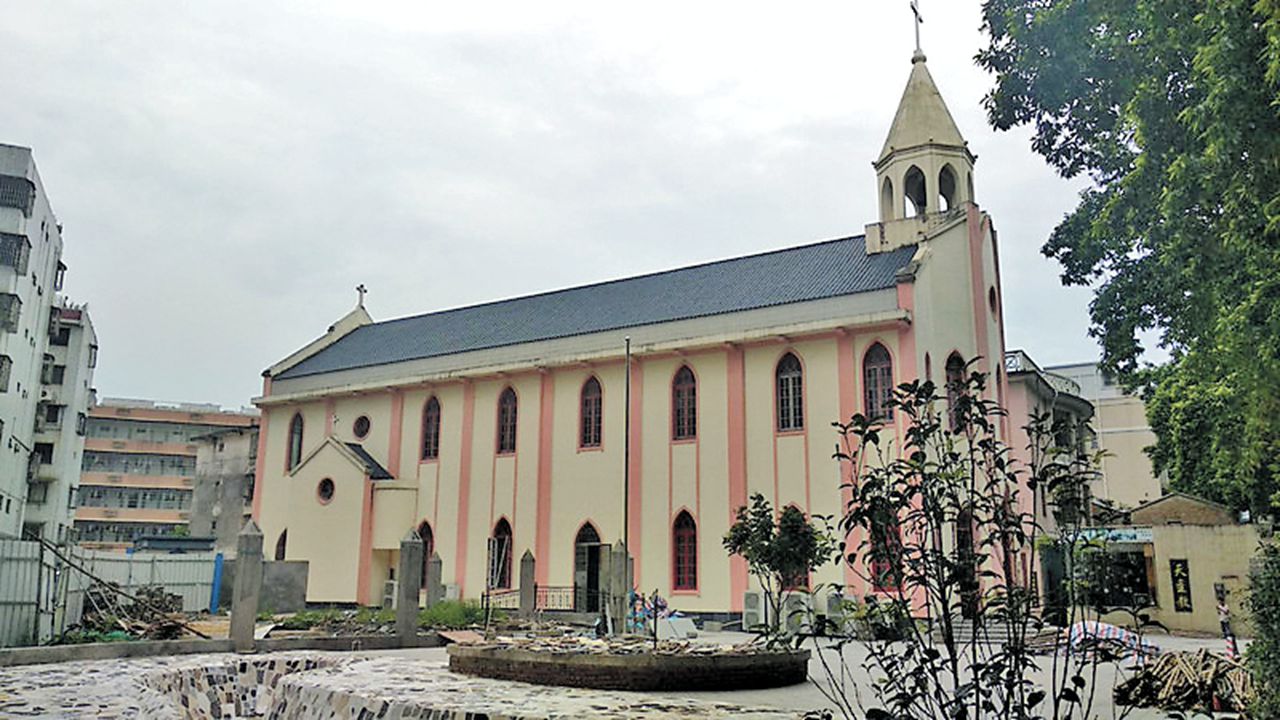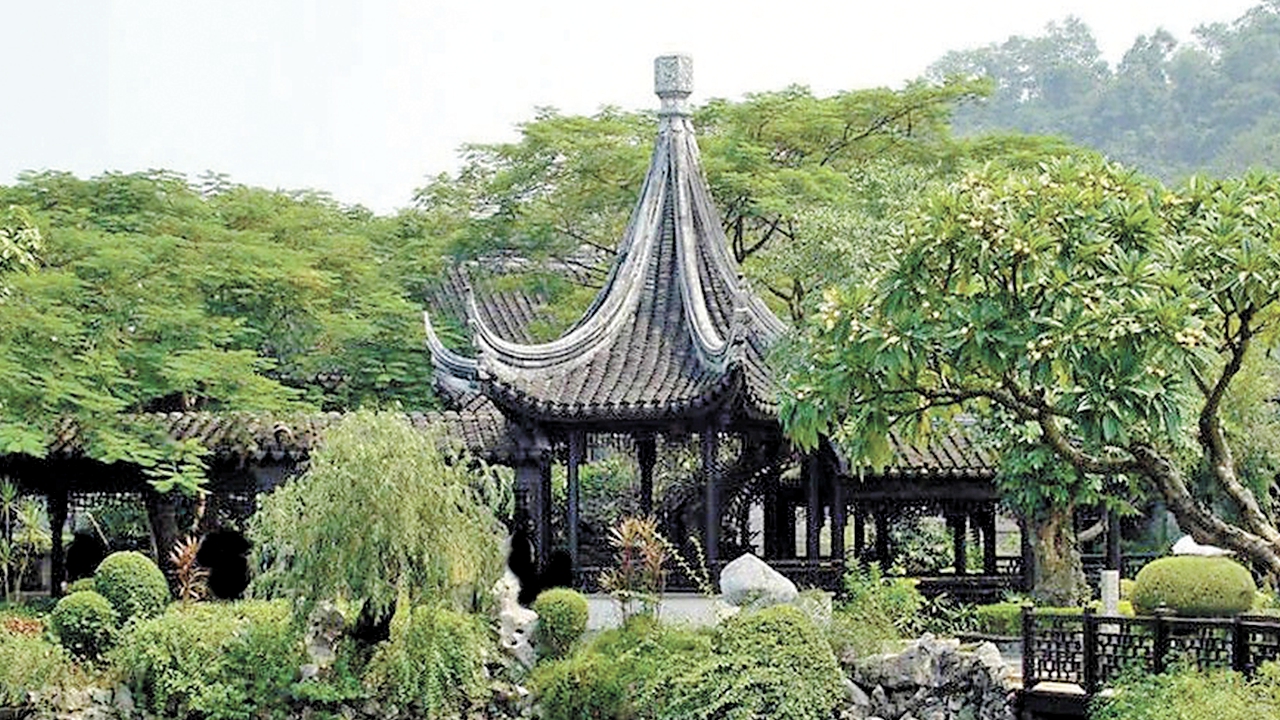Savor history, slow-paced life in Zhongshan
Writer: Li Dan | Editor: Zhang Zhiqing | From: Shenzhen Daily | Updated: 2024-07-08
Zhongshan, to the west of Pearl River mouth, is a historical city named after Sun Yat-sen, the founding father of the Republic of China. Known for its cityscapes and slow-paced life, Zhongshan can be an antidote to the anxiety that permeates the fast-paced, efficiency-centered lifestyle in Shenzhen. With the opening of the Shenzhong Link, Shenzhen residents can now travel to their neighbor across the sea within 30 minutes. Here are some destinations highly recommended by travel bloggers.
Sun Yat-sen’s Residence in Cuiheng Village
The site, covering 3.15 square kilometers, comprises a new museum building, old houses once inhabited by Sun, his family, and associates, gardens, and the Zhongshan film studios. On the wall near the gate of the site is inscribed in Sun’s own handwriting the four large Chinese characters “天下为公,” which translates to “the Republic for the Public,” summarizing Sun’s lifelong pursuit.

Visitors are seen in front of the Sun Yat-sen Memorial Hall, a landmark of Zhongshan City. File photos
The main museum displays historical photos and relics that recount Sun’s life story and the society of his time. Visitors can see the furniture once used by Sun and his wife Song Qingling at the venue. Each of the surrounding houses has been transformed into museums to illustrate the lives of Sun’s associates or some other aspect of living in the early 20th century.
The nearby Zhongshan film studios feature props and architecture in various styles. Tourists can rent costumes for a fee and take dramatic photos for souvenirs. While the museums and parks are open to the public for free, the film studios charge an entrance fee of 65 yuan (US$8.9) per adult visitor.
Address: Cuiheng Boulevard, Cuiheng Village
Sunwen West Road Pedestrian Street
One of China’s earliest pedestrian streets, which previously housed affluent traders and merchants, the business block was formerly known as Ying’en Street. It acquired its current name in 1925 to honor Sun Yat-sen, who passed away on March 12 of that year (Sun Wen was Sun Yat-sen’s original name).
Along the 529-meter street, rows of tastefully restored townhouses and distinctive towers, blending Chinese and Western styles, form an impressive cityscape where tourists can lounge away a leisurely afternoon. Visitors will come across the original site of Sihao Grand Hotel along the street, first built in 1924 as the Xiangshan Bank’s office building. The bank building was reduced to rubbles during World War II, and a five-story building was erected in the late 1940s at the site, becoming a luxurious hotel and a landmark of the area.
There is a museum on the street dedicated to the local trade history. Visitors can also ride a 108-meter-tall Ferris wheel not far away, taking in panoramic views of the cityscape along the Qijiang River.
Address: Downtown Shiqi District

Crowds are seen on the Sunwen West Road Pedestrian Street in downtown Zhongshan.
Zhongshan City Museum
The Zhongshan City Museum, housed in a structure blending Chinese and Western architectural elements, is a place for history buffs seeking to delve into the city’s past. Beyond historical artifacts and records, the museum offers visitors a digital immersive experience, transporting them back to various historical eras.
Opposite the museum stands the Sun Yat-sen Memorial Hall, a city landmark resembling the Chinese character “中” (“center”) when viewed from above, with its façade mirroring the character “山” (“mountain”). Together, these characters form the name of Sun Yat-sen. Aside from its historical significance, this area provides a peaceful retreat with expansive lawns, lush trees, and inviting benches.
Add: 197 Sunwen Central Road
Qijiang Park
Qijiang Park is a small, beautiful park located on the grounds of the old Yuezhong Shipyard along the Qijiang River. While the shipyard itself no longer stands, several old buildings, including a water tower and other dockyard fixtures, have been preserved and integrated into the landscape.
Visitors can enjoy a leisurely boat cruise or unwind at a nearby Starbucks, sipping a cup of coffee while taking in the sceneries.
Home to a fine arts museum, the park serves as an ideal destination for a family outing or a casual stroll
Add: Adjacent to the intersection of Zhongshan Road 1 and Xidi Road
Shiqi Catholic Church
The Shiqi Catholic Church, also known as the Notre Dame Church of Innocence, is a 15-meter-tall Gothic structure built in 1942 using steel and cement. Situated along a tree-lined avenue, the church has plastered walls in shades of cream and pink, complemented by arched red windows and doors, as well as exquisite stained glass window panes.

Shiqi Catholic Church can accommodate up to 200 worshippers.
With a simplistic design featuring a high vaulted ceiling covering a single main apse, the church can accommodate up to 200 worshippers. Inside, dark brown chairs are arranged on a burgundy-colored grindstone floor, which is reminiscent of churches found in Europe and creates a tranquil space of worship or rest for the casual visitor.
Add: 148 Sunwen Central Road
Xishan Temple
Originally built during the Ming Dynasty (1368-1644) as the private study of local scholar Mao Kezhen, Xishan Temple was later transformed into a place of worship. Rebuilt in 1988, the temple, though modest in size, offers a serene escape from the hustle and bustle of city life.
Positioned on a small hill within Xishan Park, the temple provides a tranquil sanctuary for visitors.
Add: 240 Sunwen Central Road

Xishan Temple provides a tranquil sanctuary for visitors.
Zhanyuan Garden
Not to be confused with another garden of the same name in Nanjing, the capital of Jiangsu Province, Zhanyuan Garden spans over 60,000 square meters. Constructed in the early 1900s by Huang Yuanxin, a businessman and the first mayor of Zhongshan, this private garden served as the family residence.

Zhanyuan Garden features traditional towers, pavilions, corridors, ponds, and bridges interspersed among lush vegetation and rockeries.
As the largest garden of its kind in the Lingnan region (south of the Nanling Mountain Ranges), it features classical Chinese garden architecture with traditional towers, pavilions, corridors, ponds, and bridges interspersed among lush vegetation and rockeries.
Huang named the garden after his mother, who had worked diligently to support the family.
Add: By National Highway 105 in Beitai Village, south of Zhongshan